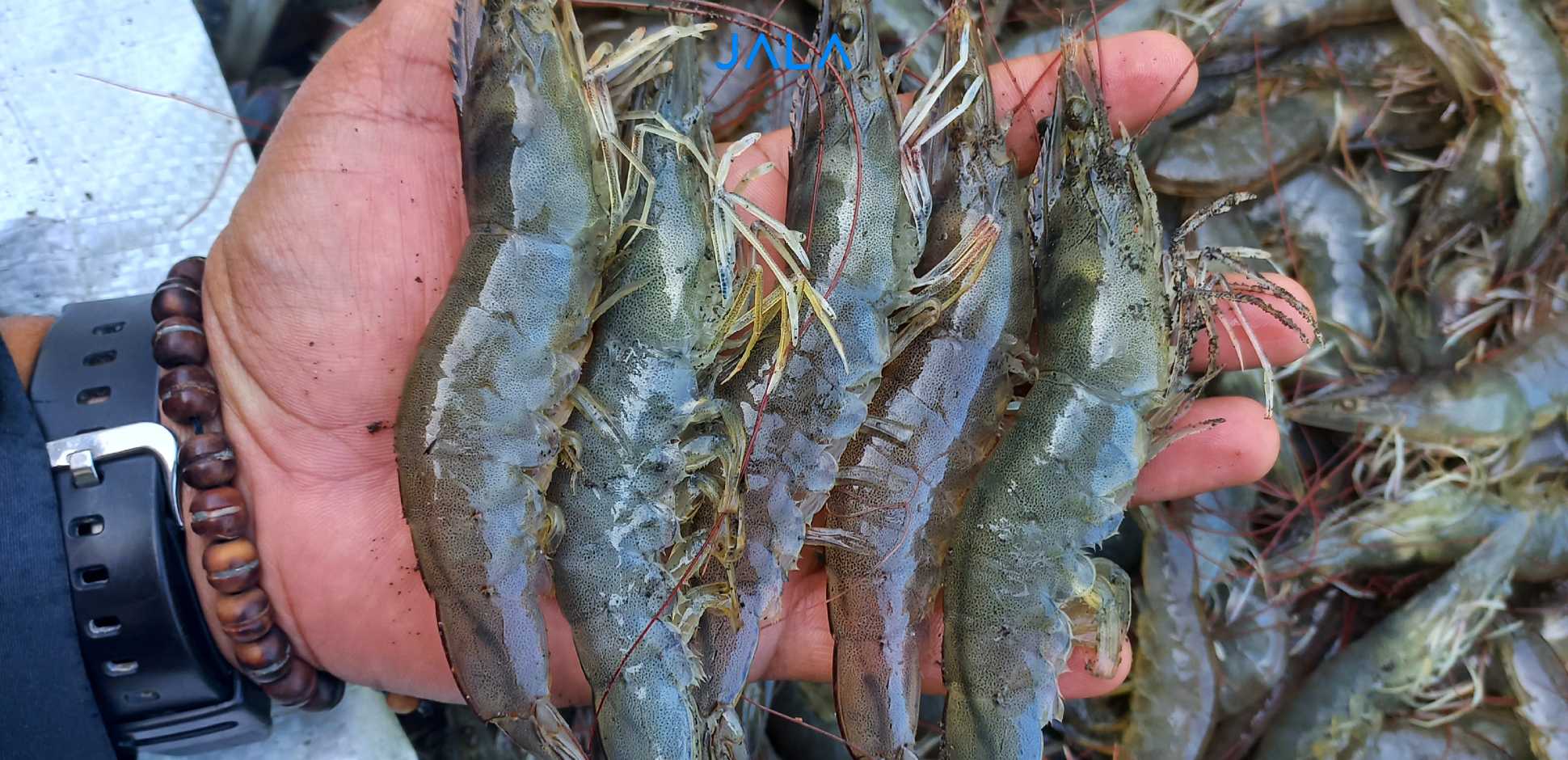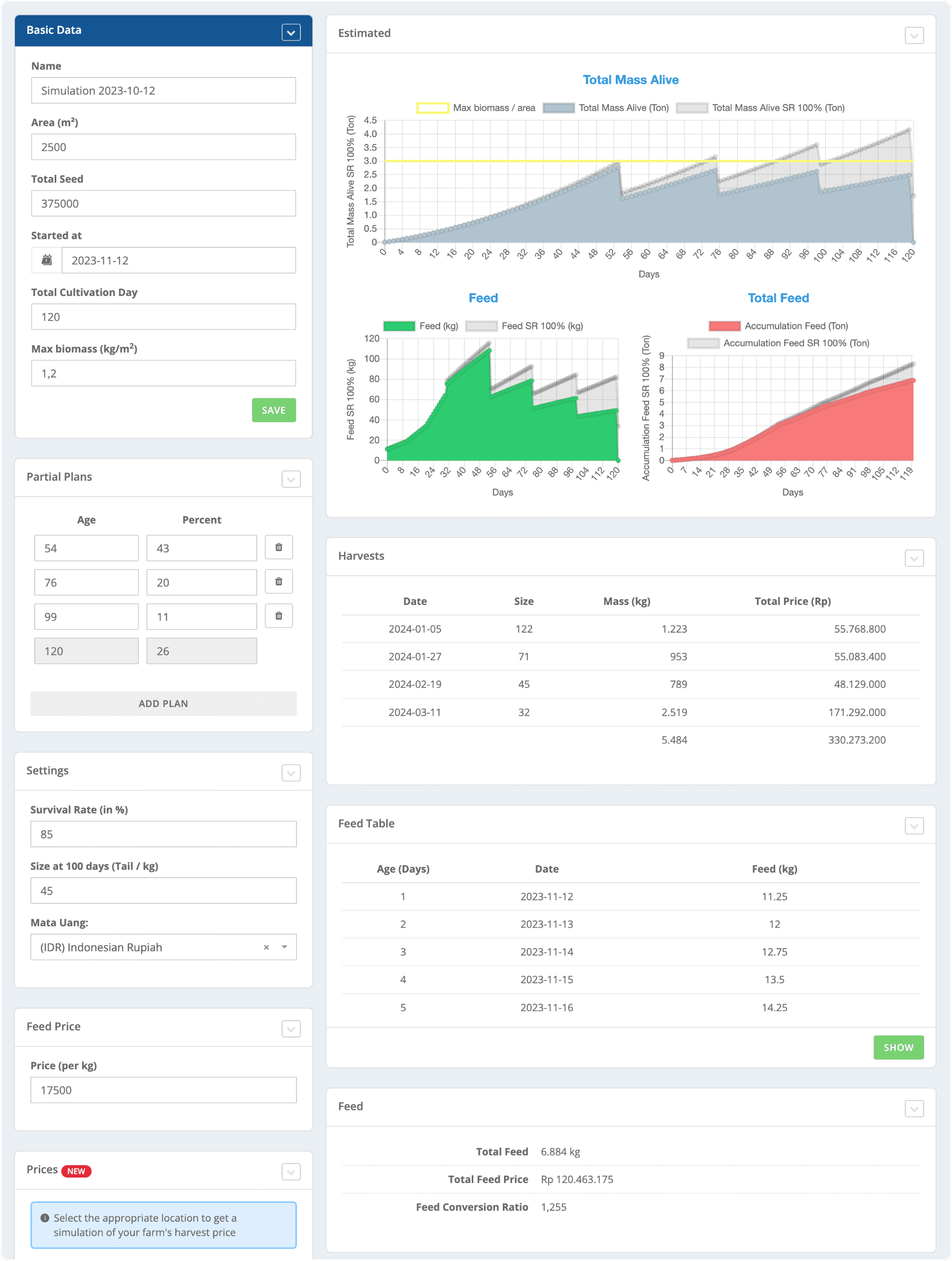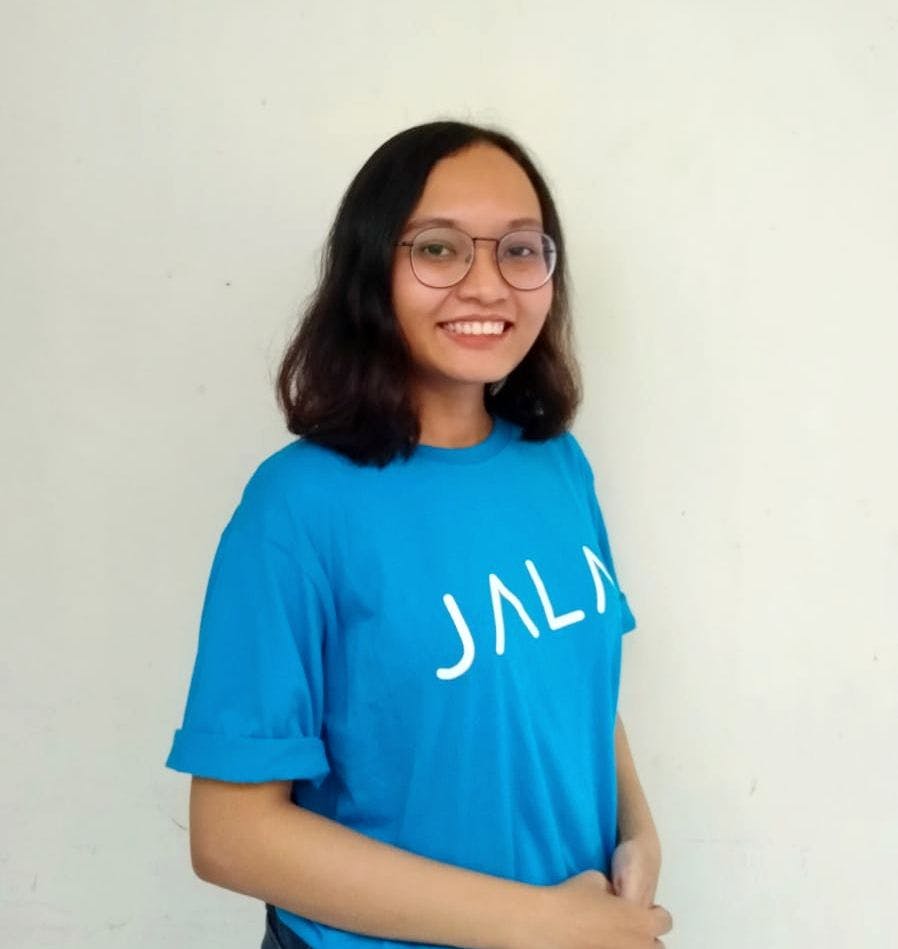
Harvesting is the final stage in the cultivation process when farmers take shrimp that have been cultivated for some time. During harvesting, farmers can evaluate the cultivation process that has been carried out for their considerations to implement better SOPs in the next cycle.
There are two harvest methods that farmers usually implement, namely partial harvest and total harvest. Partial harvest is the activity of taking only a part of the shrimp population from the pond and leaving the rest to be cultivated until a certain age. Partial harvest aims to reduce stocking density in ponds, lowering the risk of disease transmission and maintain the environmental carrying capacity. Stocking density is the number of shrimp stocked in a certain unit area (PL/m2). In addition, partial harvest can also increase productivity and profits because the size of the shrimp obtained at the end of cultivation will be larger.
Meanwhile, total harvest is the activity of taking all the shrimp in the pond when their size has reached the target or sales criteria. Shrimp size is a measurement that states the number of shrimp in 1 kilogram (pcs/kg). To determine shrimp size, divide 1 kilogram of shrimp by ABW (Average Body Weight).
When should farmers do partial harvest?
Partial harvest tends to be more suitable for cultivation with high stocking densities such as in intensive systems, given the large number of shrimp in the pond. Farmers who implement an intensive cultivation system can do partial harvests periodically, starting when the shrimp reach size 100, which usually occurs on Day of Culture (DoC) 80-100 when the selling value is already good enough. DoC is the duration of cultivation, beginning from when the shrimp were first stocked in the pond.
In addition, partial harvest can also be done when the following cases occur:
Shrimp growth rate is slow
In some cases, shrimp can grow at varying speeds, some grow more quickly than others and some grow slower. It is possible for the shrimp with slower growth rate to lose in the competition to get feed. If it is neglected, the size uniformity will decline and affect harvest income. Partial harvest may reduce the eating competition among shrimp.
Carrying capacity is exceeded
In shrimp farming, carrying capacity is the capacity of the ecosystem to ensure that shrimp's food, habitat, space and other needs are met. If carrying capacity is met or even excessive, water quality will decline and disease will spread, resulting in the declining productivity. When this happens, a partial harvest must be conducted to maintain optimal shrimp growth.
When should farmers do total harvest?
Total harvest is usually done when the shrimp have achieved the desired target weight and size, generally between DoC 90 to 120. However, total harvest can be done earlier or later, depending on the growth rate of the shrimp or market demand.
In addition, total harvest can also be done when the following cases occur:
Shrimp are infected with disease
Disease infections will endanger shrimp and lead to the risk of losses. In order to reduce losses, farmers may harvest all the shrimp in the pond.
Shrimp price drops
When shrimp price in the market shows signs of significant drop, farmers may conduct a total harvest. Every farmer definitely wants the best price for their shrimp, hence when the price of shrimp drops, like it or not, they have to harvest all the shrimp as soon as possible to reduce losses. As a disclaimer, it is important to not do panic harvest because it may lead to losses. When the shrimp price drops, it is better to find the most stable price and run the cultivation as usual to achieve the best price.
Check harvest estimation and latest shrimp prices on JALA App
If you are currently planning to harvest, there are several things you need to do to maximize the profit, one of which is checking the harvest estimation. Now, you can do it easily on JALA App Simulation Feature.

You just need to input a few details such as pond area width, harvest period, biomass, partial harvest plan (optional), SR target, and size in DoC 100. You can also choose a location to get the estimation of shrimp selling prices there.
Furthermore, it is important to check the latest shrimp prices in your area. By researching the selling prices estimation in the market, you will be able to determine the best price for your shrimp and avoid losses. JALA also accommodates this need through the Shrimp Price feature on JALA App.
In this feature, you can see the distribution of shrimp prices based on size and price trends in various regions. If you can’t find the price estimation in your area, fret not because you can add it yourself with the Private Shrimp Price feature.
Harvest your shrimp with JALA!
To maximize your profits, let’s harvest your shrimp with JALA! Our harvest service guarantees fast, safe and reliable payments with transparent harvest SOPs. Your shrimp quality will be maintained during the distribution process from the farm.
By harvesting with JALA, get the chance to win fantastic prizes in the Gebyar Panen program, such as e-money, PS5, smartphones, laptops, JALA Baruno, and a motorbike! Make sure you have an account on JALA App and start collecting the coupons. The greater your harvest tonnage, the greater your chance of winning.
What are you waiting for? Harvest your shrimp with JALA and get the chance to win the prize of your dreams in the Gebyar Harvest program!
Resources
Carrying Capacity Ideal Meningkatkan Produktivitas | JALA Manual on Pond Culture of Penaeid Shrimp: Harvesting | FAO Panen Parsial Maksimalkan Keuntungan | Agrina Panen Parsial yang Aman | JALA Partial Harvesting: A Smart Strategy for Shrimp Farmers | Global Seafood Alliance





